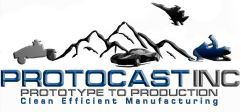Throughout human history, mankind has sought out to make things easier, more efficient, and more sustainable to benefit themselves as well as generations to come. The reduction in labor since early times is a major payoff when it comes to innovation. For millennia, mankind has manipulated the natural resources available on earth in order to ensure its survival and improve its overall quality of life.
Prototype Casting is carrying on the ancient legend of casting, but with a highly mechanized, streamlined and efficient modern twist. Since early mankind shaped bowls, tools, and weapons out of stones and wood, to discovering precious metals that were eventually melted and shaped into other useful tools, casting plays a fundamental role in mankind’s evolution. Due to the importance of metal casting, we here at Prototype casting felt it necessary to outline the history of metal casting, to provide greater context for the work that we do as a machine shop.

